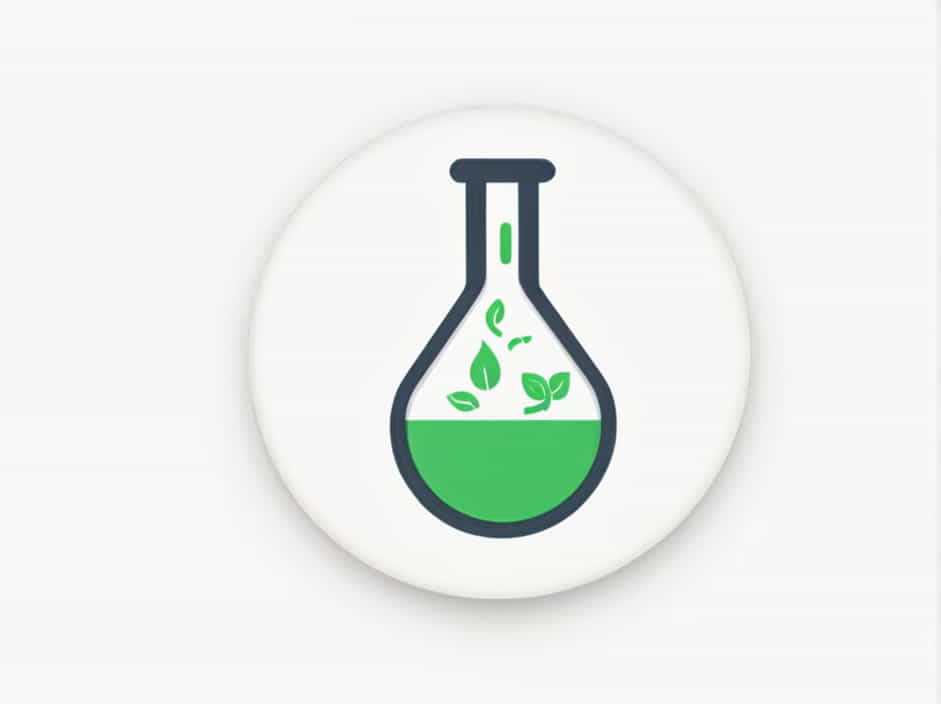Photosynthetic pigments, such as chlorophylls and carotenoids, are essential for plant growth and energy production. These pigments absorb light energy and convert it into chemical energy through photosynthesis. Measuring the concentration of these pigments is crucial in plant physiology, environmental studies, and agricultural research.
One of the most effective methods for quantifying photosynthetic pigments is spectrophotometry. This technique uses a spectrophotometer to measure the absorbance of light at specific wavelengths, providing accurate pigment concentration data.
In this topic, we will explore the principles of spectrophotometric quantification, the methods used, and the significance of this technique in research and industry.
Photosynthetic Pigments and Their Role
Photosynthetic pigments are molecules that absorb light energy for photosynthesis. The primary types of pigments include:
1. Chlorophylls
- Chlorophyll a: The most abundant pigment, essential for photosynthesis. It absorbs light mainly in the blue-violet and red regions.
- Chlorophyll b: Works alongside chlorophyll a, absorbing light in the blue and red-orange regions, expanding the spectrum of light used for photosynthesis.
2. Carotenoids
- Carotenes: Orange pigments that help in light absorption and protect plants from oxidative damage.
- Xanthophylls: Yellow pigments involved in light harvesting and photoprotection.
These pigments determine the efficiency of photosynthesis and are vital indicators of plant health and stress conditions.
Principle of Spectrophotometric Quantification
Spectrophotometry is based on the principle that pigments absorb light at specific wavelengths. The spectrophotometer measures how much light is absorbed by a pigment solution, and this absorbance value is used to determine the pigment concentration.
How It Works
- A light source emits a broad spectrum of light.
- The sample solution absorbs specific wavelengths of light.
- The spectrophotometer measures the intensity of transmitted light.
- The absorbance value is recorded, and pigment concentration is calculated using standard formulas.
The absorption spectrum of photosynthetic pigments is well-defined:
- Chlorophyll a absorbs maximally at 663 nm and 430 nm.
- Chlorophyll b absorbs maximally at 645 nm and 460 nm.
- Carotenoids absorb maximally between 400-500 nm.
By measuring absorbance at these wavelengths, researchers can determine the exact concentration of each pigment in a sample.
Methods for Pigment Extraction and Measurement
1. Sample Preparation
- Fresh plant leaves are collected and weighed.
- The leaves are ground with 80% acetone or ethanol to extract pigments.
- The extract is centrifuged to remove debris, leaving a clear supernatant for analysis.
2. Spectrophotometric Measurement
- The spectrophotometer is calibrated using a blank solvent (acetone or ethanol).
- The absorbance of the pigment extract is measured at specific wavelengths corresponding to chlorophylls and carotenoids.
- The data is used in equations to calculate pigment concentration.
3. Standard Equations for Pigment Quantification
The following equations are commonly used to determine pigment concentrations (in mg/g of tissue):
For chlorophyll a:
For chlorophyll b:
For total carotenoids:
Where:
- A_{663} , A_{645} , and A_{470} are absorbance values at 663 nm, 645 nm, and 470 nm, respectively.
These calculations provide precise pigment concentrations, essential for various biological and agricultural studies.
Applications of Spectrophotometric Pigment Quantification
1. Assessing Plant Health
Measuring chlorophyll content helps detect nutrient deficiencies, diseases, and environmental stress in plants. For example, low chlorophyll levels may indicate nitrogen deficiency.
2. Monitoring Environmental Pollution
Pollutants such as heavy metals and pesticides can affect pigment concentration. Spectrophotometric analysis helps track pollution effects on plant physiology.
3. Agricultural Research
Understanding pigment concentration can optimize crop management and breeding programs, leading to improved photosynthetic efficiency and yield.
4. Studying Photosynthesis Efficiency
By comparing pigment concentrations under different light conditions, researchers can analyze how plants adapt to varying environments.
Advantages and Limitations of Spectrophotometry
Advantages
✅ High Accuracy: Provides precise measurements of pigment concentrations.
✅ Non-Destructive for Small Samples: Minimal sample requirement, preserving plant material.
✅ Quick and Cost-Effective: Spectrophotometric analysis is faster and more affordable than chromatography-based methods.
Limitations
❌ Interference from Other Compounds: Presence of proteins or other pigments may affect absorbance readings.
❌ Requires Fresh Samples: Degradation of pigments over time can lead to inaccurate results.
❌ Solvent Selection Matters: Different solvents can influence pigment extraction efficiency.
Comparison with Other Techniques
While spectrophotometry is widely used, other methods are available for pigment quantification:
| Method | Advantages | Disadvantages |
|---|---|---|
| Spectrophotometry | Fast, cost-effective, and simple | May have interference from impurities |
| High-Performance Liquid Chromatography (HPLC) | Highly precise and can separate different pigments | Expensive and requires complex instrumentation |
| Fluorometry | More sensitive than spectrophotometry | Requires specific fluorescent dyes |
Despite its limitations, spectrophotometry remains the preferred choice for routine pigment analysis due to its simplicity and efficiency.
Future Perspectives in Pigment Analysis
Advancements in spectroscopy and imaging technologies are improving pigment quantification methods. Innovations such as portable spectrophotometers and hyperspectral imaging enable real-time pigment analysis in field conditions.
Additionally, machine learning algorithms are being developed to analyze pigment data more accurately, reducing errors caused by sample variability. These advancements will enhance the application of spectrophotometry in agriculture, ecology, and climate research.
The quantification of photosynthetic pigments using a spectrophotometer is a vital tool in plant science, environmental monitoring, and agricultural research. By measuring absorbance at specific wavelengths, scientists can determine chlorophyll and carotenoid concentrations accurately.
This method is widely used due to its simplicity, efficiency, and affordability. However, researchers must carefully consider solvent selection, sample preparation, and possible interferences to ensure accurate results.
As technology advances, spectrophotometric pigment analysis will continue to evolve, providing deeper insights into plant health, productivity, and environmental changes.
